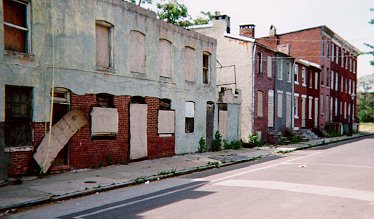On The Concept of a American Child Allowance Policy
- https://www.vox.com/2016/5/23/11440638/child-benefit-child-allowance
- https://ifstudies.org/blog/cash-for-kids-assessing-the-american-family-act
- https://www.washingtonpost.com/business/economy/13-million-people-in-poverty-are-disconnected-from-the-social-safety-net-most-of-them-are-white/2019/02/04/807516a0-2598-11e9-81fd-b7b05d5bed90_story.html
- https://www.washingtonpost.com/news/worldviews/wp/2013/04/15/map-how-35-countries-compare-on-child-poverty-the-u-s-is-ranked-34th/
Analysis of Chicago’s Affordable Requirement Ordinance Data
The Affordable Requirements Ordinance, the City of Chicago’s inclusionary housing policy, was first created in 2003 to promote affordable housing as was a major victory for housing activists. It’s 2007 iteration required approved projects covered to set-aside 10% of units for affordable housing (20% if receiving city financial assistance) or pay $100,000 into a fund for affordable housing. For sale housing units needed to be affordable to households below 100% of Area Median Income (AMI) and rental units needed to be affordable to households below 60% of AMI. The 2015 amendment to the ordinance significantly adjusted the framework, separating out developments in low-to-moderate, high-income and downtown zones, setting in-lieu payment fees between $50,000 to $225,000 per unit, and setting more stringent requirements for including at least a portion of the units in the subject development. In 2017, a new Pilot program was created for the rapidly gentrifying areas of Logan Square, Near West Side and Near North Side (and expanded to Pilsen and Little Italy in early 2019) that went further in creating a units integrated into the approved developments covered under the Ordinance. If that doesn’t make it abundantly clear, the policy implemented by the Department of Planning & Development (DPD) is certainly a maze to navigate.
A Housing Agenda for Chicago’s Future

Chicago’s next mayor should move the city closer to realization of the right to housing. This is not intended to suggest a merely symbolic statement, but a call to action for a comprehensive framework to expand access to decent, affordable housing that serves as the foundation for household safety and security that extends to the neighborhood. Shelter is a need shared by all, with housing existing as a multi-faceted policy priority that is no more important anywhere but Chicago.
I have worked over the past several weeks to articulate a vision and a series of proposals for the future of housing policy in Chicago, particularly focusing on a policy framework that moves the needle on increasing equity.
A City Hall Fellow: Two Years Later
It’s been two years since I completed my memorable year of service as a City Hall Fellow with the City and County of San Francisco. Among the most memorable fellowship experiences was a January 2010 visit to the 10th and Mission Family Apartments run by Mercy Housing and Catholic Charities.
Only six months removed from completing my undergraduate degree, I had much to learn about the highly sophisticated industry buttressing the work of affordable housing. It is characterized by a decentralized system that relies more and more on non-profits like Mercy Housing (as well as for-profits) as agents of the public good. It is supported by federally and state allocated low-income housing tax credits and operating subsidies such as project-based rental assistance (formerly known as Section 8 vouchers). Equally important is property management that is both tenant-driven and revenue-concerned and complicated real estate financial modeling that glues everything else together and attracts necessary debt financing.
Education as a “Business”: Not So Fast
There are several strands of thought concerning education that I have been mulling recently. The first pertains to how the changes in how we view labor plays out in the how we treat the labor of teachers.
It is tragic that we have devolved to a point where we prioritize cost-cutting in public education as oppose to meeting the needs of students and our society.
I find it perplexing whenever I hear that thought that we must treat education more like a business. Embedded in this notion is the sad reality that much of American industry has come to a point where it desires to improve investor returns by cutting labor (and to a degree capital) costs while seeking to maintain a similar output. It’s very similar to cost-engineering, which can often be (in real estate) your supervisor looking at your construction budget and cutting something here and there in order to meet some super-imposed financial targets. Maybe that security budget was actually kind of important, those cheaper appliances will wear much quicker…but that’s not the priority.
The Fallacy of Discrimination Against the Rich
In a recent CNN news video posted online about “middle class values?” Wall Street Journal columnist Stephen Moore claims that “the only people you can legally discriminate against in this country anymore is rich people.” I was shocked by both his flippant treatment of such a truly important topic. His statement is both sadly uninformed about the one (at least) truly legal form of a discrimination we embrace and also dismissive of the continuing legacy of de facto discrimination and seemingly race-neutral policies that handicaps segments of our nation and also our collective betterment.
Urban Vitals?

The launch of my Urban Vitals blog coincides with my journey to gaining a graduate degree in city planning. Though at the ripe age of 24, I have sought intently to make productive use of my collegiate and professional career to garner a variety of experiences in the sphere of “public service.” This is blog is my conscious effort to collect and articulate my thoughts about cities, their inhabitants, my learning process and the academic and professional field of Housing, Community and Economic Development (HCED) that I dedicated my life to in March of 2010.

